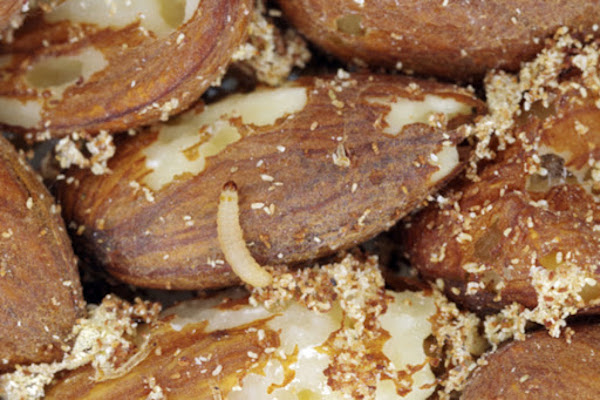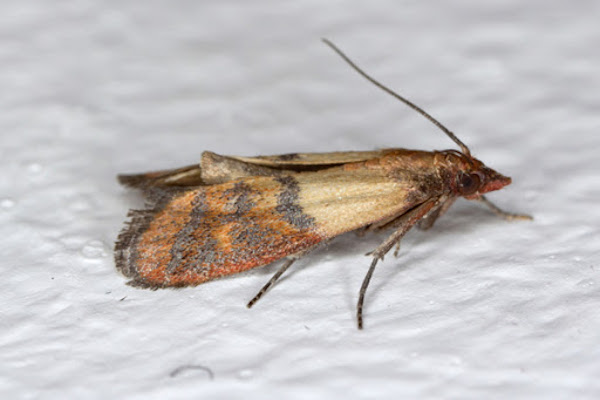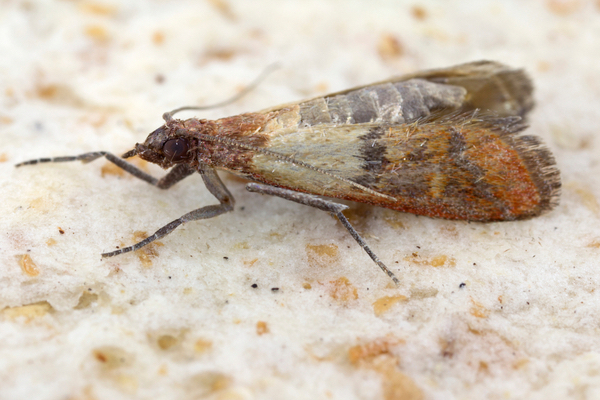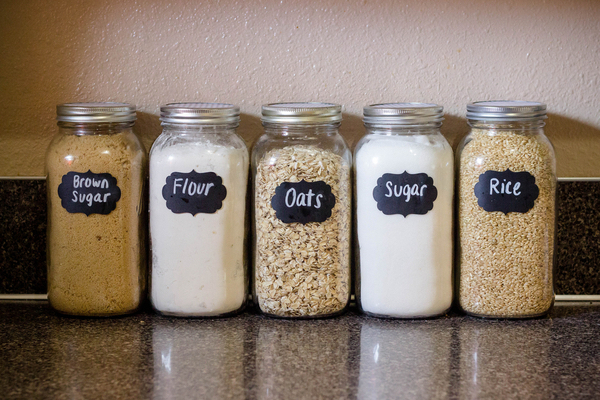Indian meal moths are among the most common stored food pest in Michigan. They infest and lay eggs inside dry stored food like cereal and bread. When the moth’s eggs hatch, their larvae eat stored food continuously until they grow large enough to pupate. After pupating, adult moths reproduce and lay eggs, and the cycle begins again.
Unfortunately, anyone who keeps food in their home can attract Indian meal moths. In fact, you might even bring them in with you! Here are the most common ways Indian meal moth infestations happen, and how you can prevent them.
How Did Indian Meal Moths Get In My Home?
Adult Indian meal moths don’t eat, but they seek out dry foodstuff anyway. When they find a good food source, they lay rows of eggs onto or into it. When larvae hatch, they begin eating the food immediately. In the process of eating, larvae burrow into the food. Depending on where they hatched, larvae may also burrow through packaging to get to food. Once burrowed inside, larvae become difficult to see. Therein lies the problem.
Indian meal moths usually infiltrate homes inadvertently, as larvae. You bring them in when you inadvertently buy the food they’re feeding on and bring it inside. Indian meal moths can infest a wide variety of different stored and dried goods. They could feed on cereal, pasta, bread, pet food, nuts, seeds, flour, dried fruit, sugar, or even spices. After the larvae pupate, they grow into the full-grown adults you might encounter in your pantry.
When Can I Get Indian Meal Moths?
Unfortunately, there isn’t really an “off-season” for Indian meal moths. Normally, meal moths can’t grow or reproduce as quickly during cold seasons. When the moths find their way indoors, however, they may reproduce all year. Moth development and pupation speed depends partially on environmental temperature. The warmer the environment, the faster the meal moths’ life cycle completes. Adult moths seek out warm places to lay their eggs, to make sure they hatch as quickly as possible.
Indian meal moths are a particularly common and troubling pest for grocery stores. As Indian meal moths continue to reproduce, they also spread. Adults constantly seek out new food sources where they can lay eggs. In all likelihood, you picked up your moths from your local grocery store. Indian meal moths don’t necessarily inhabit pantry food exclusively. They could also hide in your pet food or bird seed. All it takes is one infested food item to kickstart a full-scale invasion. Food is like an Indian meal moth’s trojan horse.

How Can I Tell If I Have Indian Meal Moths?
It can be hard to tell if you have a moth infestation at first. Indian meal moth larvae tend to burrow into the food they’re eating, making them invisible from the outside. Usually, people realize they have an infestation one of two ways. Either they see the adult moths themselves… or they find an unpleasant surprise in their food. You want to avoid both of those realizations. To do that, you’ll have to take a close look at the food in your pantry.
As larvae eat, they also spin a fine silk-like substance. This silk-like substance tends to collect their waste, shed skin, and eggshells over time. It may look like a fine spider web or clear thread over the surface of your food. You may also be able to identify small signs of burrowing or chewing on pest-vulnerable food. When larvae are ready to pupate, they leave food and spin silk cocoons on walls and ceilings nearby. Finding these cocoons will tell you there’s an infestation in progress. You could also look for packaging damage.
How Can I Prevent Indian Meal Moths?
The best way to prevent Indian meal moths is to pay close attention to the food you buy. Take care to look at dry goods carefully before you bring them home with you. Remember: larvae can chew through packaging, so even goods in boxes or plastic bags aren’t necessarily safe. If you notice anything that looks like damage on food packaging, don’t buy that food! Make sure all boxes or bags you buy are airtight and sealed.
Double-check your pantry goods one last time as you’re putting them away. If you notice anything suspicious, don’t leave the food in your pantry. Instead, take it outside and throw it out immediately. If you’re worried you already have Indian meal moths, you should take an inventory of your pantries. Take all the food out of your pantry and transfer it into hard plastic containers. Wash out the inside of your pantry thoroughly with soap and hot water. If you find any larvae, throw out the infested food right away.
Indian meal moth infestations are easy to get and frustratingly difficult to get rid of. You might feel sure you’ve removed all the food that the moths could possibly infest… only to see a moth flying around a week later. Even worse, the longer your infestation goes on, the more expensive it becomes. Food isn’t cheap!
If you need to make absolutely sure your moths are gone, professional treatment is the way to go. Next time you have an Indian meal moth problem, give Griffin Pest Solutions a call right away. We’ll make sure your moths can’t waste any more of your time, food, or money.




